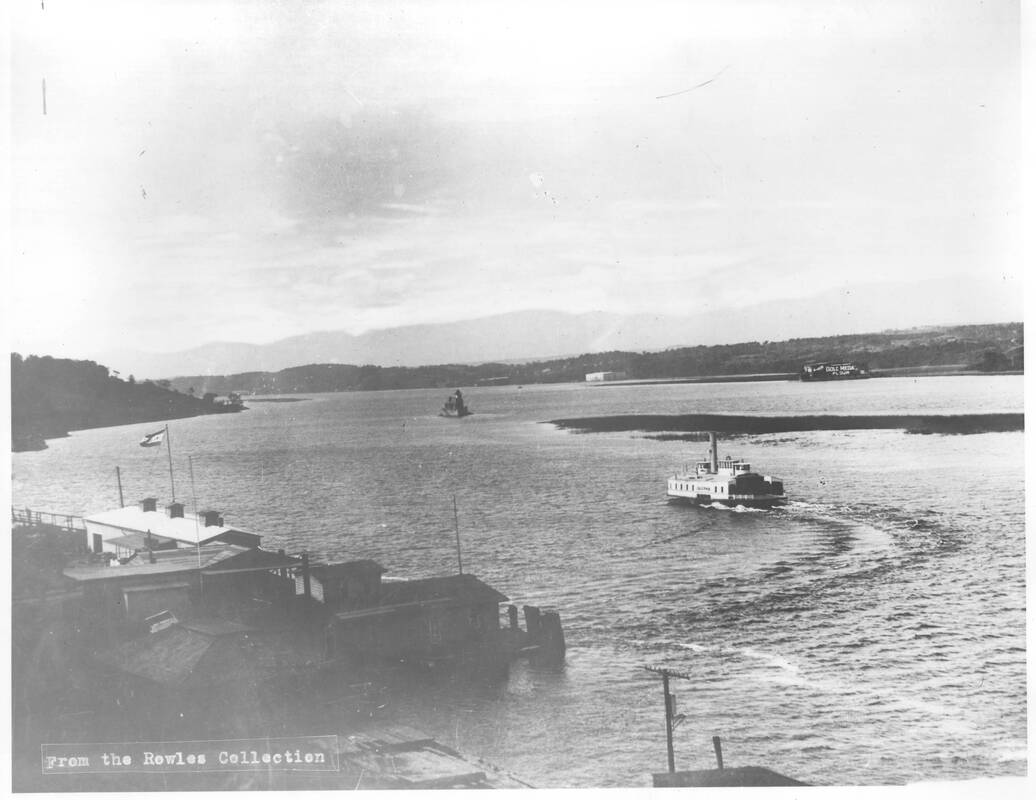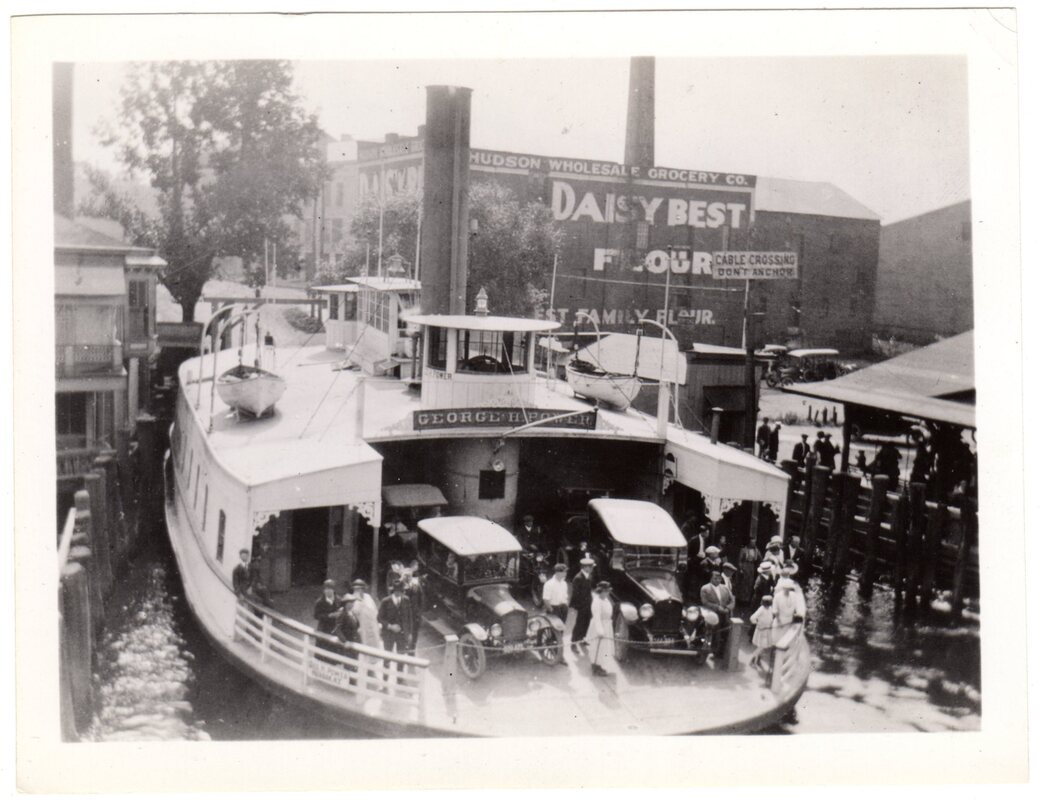|
We spent the night at Athens, and as we get underway for our second-to-last day of the North River Voyage, we thought we would talk a little bit about the history of this river town, her sister city across the river, and the middle ground in between. AthensThe village of Athens is located on the west bank of the Hudson at the mouth of Murderer's Creek. Settled as early as the mid-1600s by Dutch colonists on Mohican land, Athens was originally called "Lunenberg" and the name "Murderer's Creek" may be a corruption of the Dutch words for mother or muddy. But the discovery of the body of a young woman on its banks in 1813 cemented its name in local lore. In 1815, Athens applied for incorporation with the state under its new name, inspired by the famous ancient city in Greece. Throughout the 19th century, it was home to shipbuilding, brickyards, and ice harvesting. Sometimes overshadowed by its larger sister city to the east, Athens has maintained much of its historic character, including the preservation of two Dutch colonial houses - the Albertus Van Loon House and Jan Van Loon House. HudsonAlso a colonial Dutch settlement founded on Mohican land, Hudson was once known as Claverack Landing. When New Netherland became New York, Quaker whalers from New England moved to Hudson to escape the privations of coastal pirates. Processing whale oil and ambergris out at sea, the ocean-going whaling ships sailed up to Hudson with their cargoes. Whale oil was a huge business in the 18th and early 19th century and many early lighthouses were lit by whale-oil lamps. But by 1819 the last whaling ship had sailed out of Hudson. The Hudson River Railroad was constructed in 1850, essentially cutting many east shore Hudson River port cities off from the river. In Hudson, the railroad tracks cut off the two bays that had once held so many sailing ships. Only small fishing and recreational vessels were able to leave the harbors .Access to docks and wharfs continued over grade crossings and eventually bridges. But Hudson was transitioning to an industrial manufacturing town. Throughout the late 19th and early 20th century, Hudson was an industrial port city, with iron works and foundries, brickyards, cement factories, and more. Hudson was chartered as a city in 1785 and thrived until the 1970s, when like many industrial Hudson River towns it suffered economic decline. As with Athens, Hudson has retained much of its historic architecture. The Middle GroundOriginally just a narrow sandbar between Hudson and Athens, the Middle Ground Flats became more of an obstacle as the 19th century wore on. The Army Corps of Engineers used it as a dumping ground for dredge spoils, and the sandbar grew into an island. In 1845 the steamboat Swallow wrecked on what would become known as "Swallow Rocks" near the flats. In 1874 the Hudson Athens Lighthouse was built to warn mariners away from the flats. Even the Hudson-Athens Ferry, which had to make its way around the lighthouse and the flats, sometimes had trouble, on one foggy occasion striking the lighthouse. As the island built up, it became a popular camping and hunting location for Hudson and Athens residents, in particular because ownership of the island was nearly as muddy as its banks. The BridgeThe plan to build a bridge between Hudson and Catskill began in January, 1930, only a few months after the Black Friday stock market crash of 1929. The bridge that became known as the Rip Van Winkle Bridge was built in the depths of the Great Depression. Originally vetoed by then-Governor of New York Franklin D. Roosevelt, a new governmental organization was created to help fund the construction - the New York State Bridge Authority. With authorization from Albany to issue bonds, to be repaid by the collection of tolls, NYSBA began construction of the bridge in 1932. It was completed in 1935.
The completion of the bridge signaled the end of ferry service between Hudson and Athens and contributed to the decline of their once-bustling waterfronts.
0 Comments
Leave a Reply. |
AuthorThis Captains' Log is kept by the captains and crew of Solaris and Apollonia and staff of the Hudson River Maritime Museum. ArchivesCategories
All
|





 RSS Feed
RSS Feed
